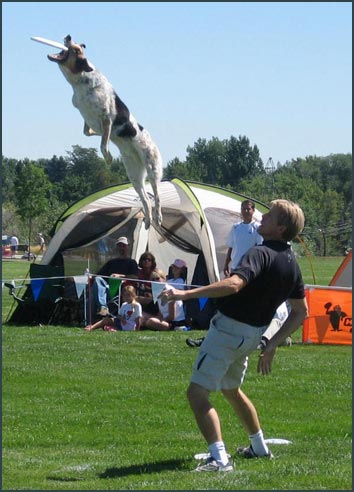From what perspective do you approach your photographic subjects?

Copyright © Kelly Mitchell
Have you heard “there are no truths, only perspectives”? All perspectives hold some angle of truth, depending on the vantage point of the viewer. I’ve discovered I can take the same approach to the subjects I’m photographing to unfold their unique character and energy. Like a lot of novice photographers, I started out with “Digital Photo for Dummies”. The most enlightening advice I took from the book was “whatever you decide to do, be relentless and develop your own style.”
I soon realized there was a parallel between my approach to life-coaching and my enjoyment of digital photography. I’ve developed my own unique style of coaching clients to achieve balance in their personal and professional lives. I approach my clients from a wide-open perspective to minimize any blind spots and to gain a larger perspective of what I perceive. I’ve applied an identical approach to my hobby of taking digital photos with great results.
What is it I see, and what do others see when looking at the same thing? More importantly, when I’m looking at a subject, what is it that I do not see? I have discovered this attitude takes me inside my subject with a howling curiosity. I look at my subjects and ask, “What are you saying or trying to show me that’s so important about you?” For example, my wife grows orchids that are great subjects for photography. However, instead of shooting the obligatory “nice pic” you’d find in botanical journals, I take several shots of a flower from the most unusual angles. I notice one frame evokes a symmetrical and busy feeling. The result seems incongruent; suddenly a subtle and elegant subject becomes cellular, rigid, and structured.

Copyright © Kelly Mitchell
Taking pictures from many angles never stops giving me the “ahas!” more commonly referred to as the “wow” shot. These photos connect to me on a visceral level and cause me to take a much closer look. In the case of the orchid, for instance, what I see with the naked eye seems to have taken little effort to create. In contrast, looking at a petal closely (courtesy of digital zoom) tells me grace and beauty come from exactness and hard work.
Over time, I’ve been able to take what I’ve learned and, by considering angles to convey what I’m really seeing in my subject, take a good-to-great shot. I love the picture taken from the shore of the lake, because the angle helps my eyes move around the scene without too much effort. The waves move toward me, while the pier moves me back out into the water. Although the subject is often photographed, choosing this angle captured the feeling of balance I experienced while walking along the coastline. Now I look in other subjects for these same forces that tug against one another to achieve harmony.
In my next picture, I applied the “rule of thirds” and took several angle shots to achieve this incredible action image. This technique is often called the “tic-tac-toe” method of composing a picture. I found this application helpful when using digital zoom. I discovered I can get several angle shots using the ability to zoom in and out on a master copy photo to capture the “wow” shot. As you can tell in the photo below, I soon achieved excellent action results.

Copyright © Kelly Mitchell
Can you see opposite forces working against each other to achieve the “wow?” shot?
Practicing composing subjects from multiple angles maximized the possibilities of creating wonderful shots. For instance, when I took this picture, I focused on the performers, but this particular angle captured what the day was all about. I couldn’t help but be pulled deeper into the photo by the people in the tent watching the show. It was only after viewing this photo later that I realized the background audience produced the effect. If a photo begs me to take a closer look, I’ve met my goal. For me, this picture says a lot about the event.
Along the way, I’ve found my challenges. There are times when I want to convey texture or sound. For now, I’m still working on the idea. If the subject I’m photographing dips, swirls, curls, bends, folds, and/or has ridges, I never take the shot straight-on. I try to get as many shots with different lighting as possible to accentuate these qualities. To capture sound in photos, I look for objects that vibrate, and I photograph from several angles and speeds to capture the movement. Whether photographing a butterfly as it lands or a drum edge-on while it’s being played, I’m still experimenting with unusual angles to help me produce pictures that move.
Developing a style is fun, and playing with my style to compose what I see and hear when I’m taking photos is what I love about photography. Being able to share these mystical frozen moments with others is very cool, too. As a novice to photography, I like the style I’m developing. I see myself as more of an explorer with a camera than a photographer. I’m always looking for something different, surprising, and uncommon. Taking photos from different angles allows me to move around and through my subjects, possibly discovering something wonderful or compelling about them. Being open to the subject matter allows me to see perspectives – an aspect I may otherwise not consider or think about. That’s how I choose to live life, too, because of the many choices it provides. I encourage others to do the same.
by Kelly Mitchell

Leave a Reply